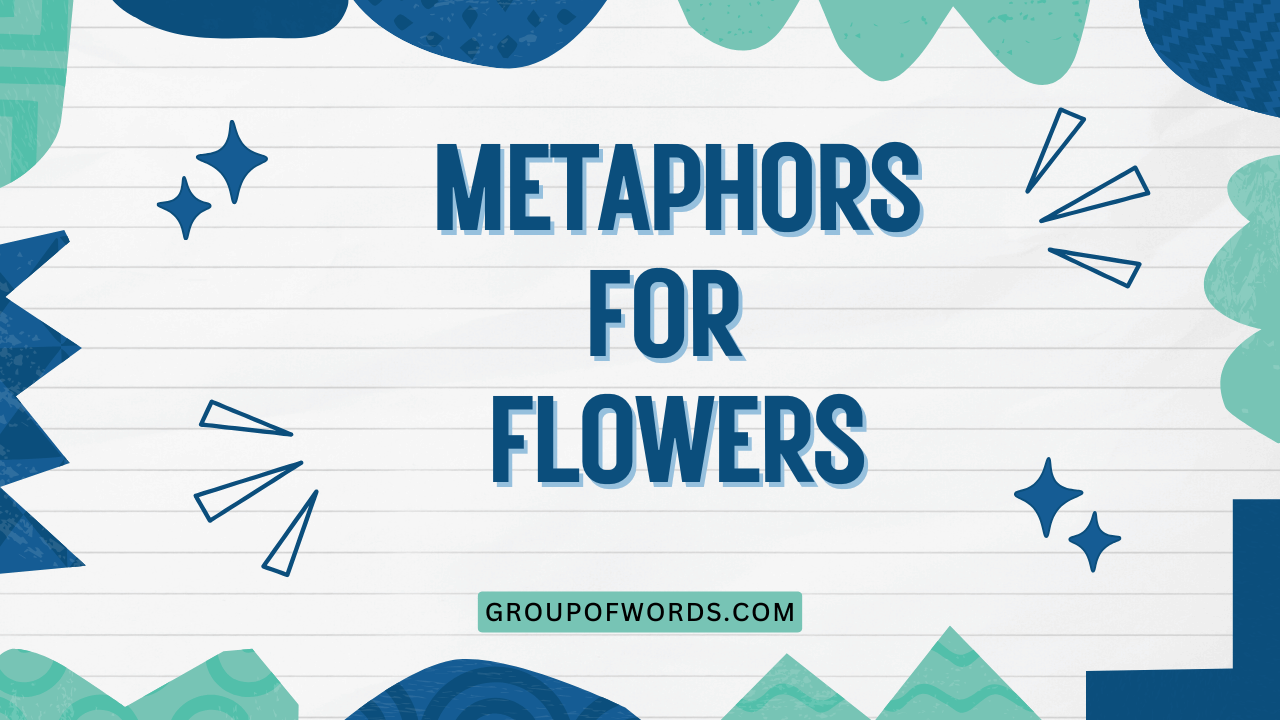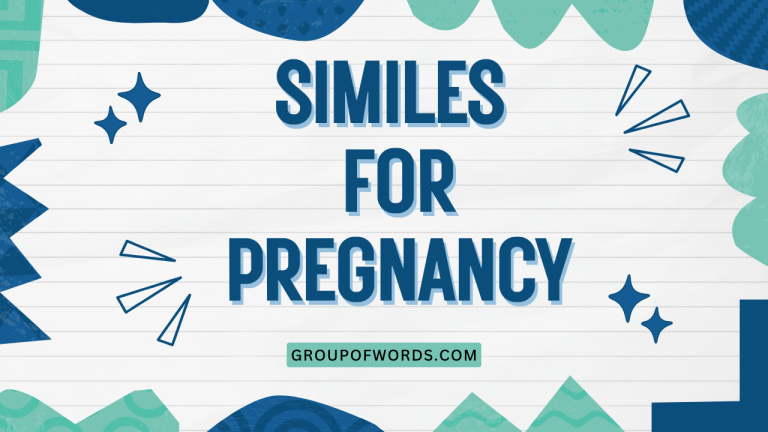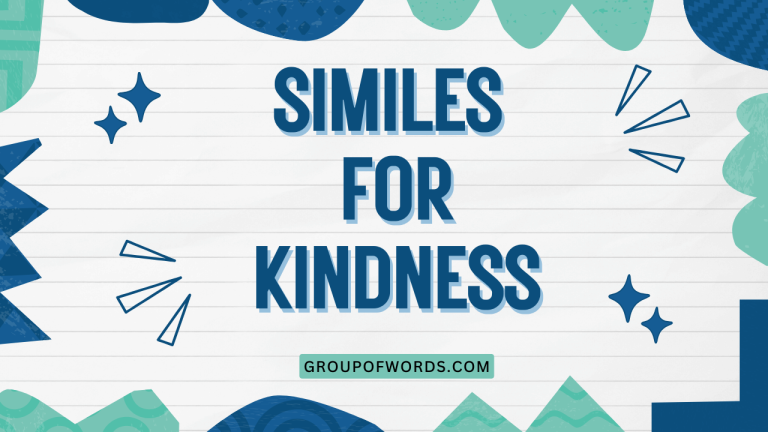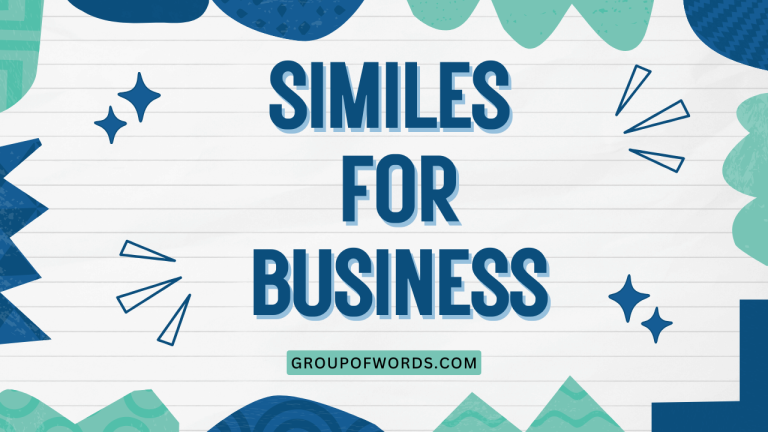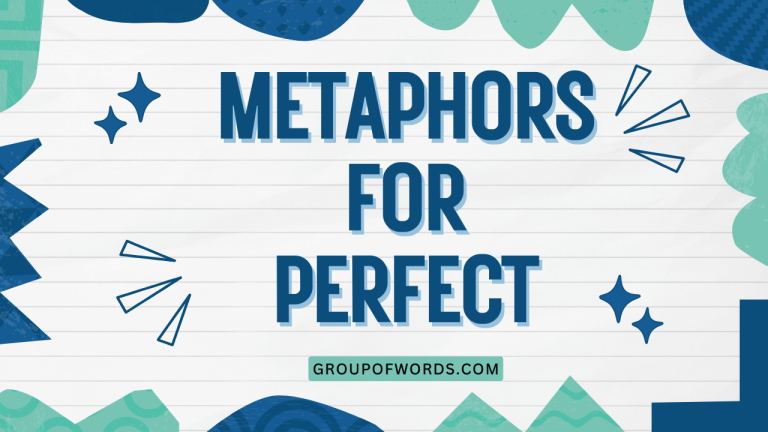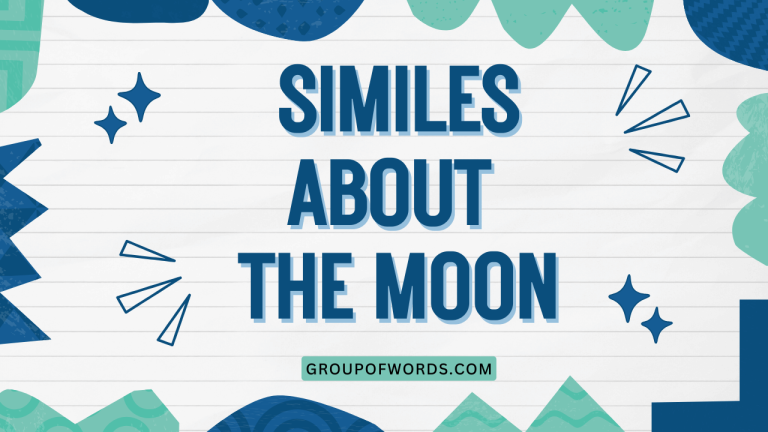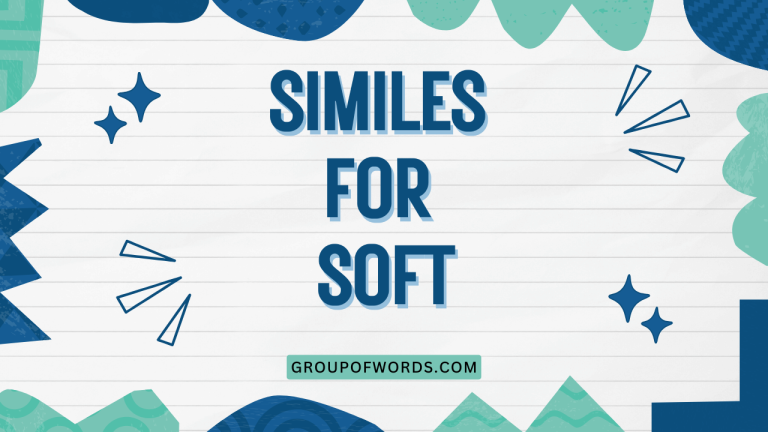Unveiling the Language of Flowers: Mastering Metaphors
Metaphors are the lifeblood of figurative language, injecting vibrancy and depth into our communication. Understanding metaphors, especially those involving flowers, enhances our ability to appreciate literature, poetry, and everyday conversations.
This article delves into the world of flower metaphors, exploring their various forms, structures, and usages. Whether you’re an English language learner, a student of literature, or simply someone who enjoys the beauty of language, this comprehensive guide will equip you with the knowledge and skills to master the art of flower metaphors.
Flowers, with their inherent beauty and symbolic richness, offer a fertile ground for metaphorical expression. They can represent anything from love and beauty to fragility and transience.
By understanding how these metaphors work, we can unlock deeper meanings and appreciate the nuances of language. This article provides numerous examples, practice exercises, and detailed explanations to ensure a thorough understanding of the topic.
Table of Contents
- Definition of Flower Metaphors
- Structural Breakdown of Flower Metaphors
- Types and Categories of Flower Metaphors
- Examples of Flower Metaphors
- Usage Rules for Flower Metaphors
- Common Mistakes with Flower Metaphors
- Practice Exercises
- Advanced Topics in Flower Metaphors
- Frequently Asked Questions
- Conclusion
Definition of Flower Metaphors
A metaphor is a figure of speech that directly compares two unlike things without using “like” or “as.” It asserts that one thing is another, creating a vivid and often surprising connection. Flower metaphors specifically use flowers as the vehicle to represent something else—an abstract concept, a person, an emotion, or a situation. These metaphors draw upon the established symbolism and characteristics associated with different types of flowers to create meaning.
The effectiveness of a flower metaphor lies in its ability to evoke a specific image or feeling in the reader’s mind. For instance, calling someone a “late bloomer” uses the image of a flower that blossoms later than others to suggest that the person achieves success or recognition later in life.
The success of a metaphor hinges on the reader’s understanding of both the literal meaning of the flower and its associated symbolism.
Flower metaphors can function in various contexts, from poetry and literature to everyday conversations and advertising. They add depth and color to language, making it more engaging and memorable.
By understanding the nuances of flower symbolism, we can better appreciate and interpret these metaphors.
Structural Breakdown of Flower Metaphors
The structure of a flower metaphor typically involves two main elements: the tenor and the vehicle. The tenor is the subject being described, while the vehicle is the flower used to represent it. The connection between the tenor and the vehicle is based on shared characteristics or associations.
For example, in the metaphor “She is a shrinking violet,” the tenor is “she,” and the vehicle is “shrinking violet.” The shared characteristic is shyness or timidity. The metaphor suggests that the woman is shy and withdrawn, just like a shrinking violet.
Flower metaphors can also be embedded within larger sentences or phrases, adding layers of meaning and complexity. Understanding the structural elements helps us to deconstruct and interpret these metaphors effectively.
The following table illustrates the structural breakdown of flower metaphors:
| Metaphor | Tenor (Subject) | Vehicle (Flower) | Shared Characteristic |
|---|---|---|---|
| He is a sunflower in a field of weeds. | He | Sunflower | Brightness, positivity, standing out |
| Her smile is a blooming rose. | Her smile | Blooming rose | Beauty, radiance |
| They are fragile blossoms in a harsh world. | They | Fragile blossoms | Vulnerability, delicacy |
| The project was a wilting daisy. | The project | Wilting daisy | Failure, decline |
| He’s a late bloomer in the art world. | He | Late bloomer | Delayed success or recognition |
| She is a rose among thorns. | She | Rose | Beauty, resilience |
| The idea blossomed into a successful business. | The idea | Blossomed | Growth, development |
| His words were like poisoned orchids. | His words | Poisoned orchids | Deceptive beauty, toxicity |
| She is a delicate daffodil in springtime. | She | Daffodil | New beginnings, beauty, freshness |
| The relationship withered like a forgotten flower. | The relationship | Forgotten flower | Decline, neglect |
| He’s a lotus in the mud. | He | Lotus | Purity, enlightenment arising from adversity |
| Her spirit is a vibrant poppy. | Her spirit | Poppy | Vibrancy, energy, remembrance |
| The city is a garden of opportunity. | The city | Garden | Growth, potential |
| His optimism is a perennial bloom. | His optimism | Perennial bloom | Endurance, lasting joy |
| She is a resilient dandelion. | She | Dandelion | Resilience, adaptability |
| The scandal was a thorny issue. | The scandal | Thorns | Difficulty, unpleasantness |
| He’s a budding talent. | He | Budding | Potential, promise |
| Her legacy is an everlasting flower. | Her legacy | Everlasting flower | Immortality, lasting impact |
| They are wildflowers in a controlled garden. | They | Wildflowers | Freedom, individuality |
| The project was nipped in the bud. | The project | Bud | Premature end, failure |
| Her kindness is a fragrant blossom. | Her kindness | Fragrant blossom | Pleasantness, generosity |
| He’s a wallflower at parties. | He | Wallflower | Shyness, introversion |
| Their love is a deep-rooted bloom. | Their love | Deep-rooted bloom | Strength, longevity |
Types and Categories of Flower Metaphors
Flower metaphors can be categorized based on the specific qualities or characteristics being emphasized. Understanding these categories can help in analyzing and interpreting different types of flower metaphors.
Metaphors of Beauty and Attractiveness
These metaphors use flowers to represent physical or aesthetic beauty. Examples include “She is a rose” or “His eyes are like violets.” The choice of flower often reflects the specific type of beauty being conveyed.
Metaphors of Fragility and Delicacy
These metaphors highlight the delicate and vulnerable nature of the subject. Examples include “They are fragile blossoms” or “Her heart is a wilting flower.” These metaphors often evoke a sense of tenderness or protectiveness.
Metaphors of Growth and Development
These metaphors use the life cycle of a flower to represent growth, progress, or potential. Examples include “The idea blossomed” or “He is a budding artist.” These metaphors often convey a sense of hope or optimism.
Metaphors of Transience and Mortality
These metaphors emphasize the fleeting nature of life or beauty. Examples include “Life is a fading flower” or “Their youth was a spring bloom.” These metaphors often evoke a sense of melancholy or reflection.
Metaphors of Resilience and Strength
These metaphors use flowers known for their hardiness to represent strength and resilience. Examples include “She is a resilient dandelion” or “He is a sunflower standing tall.” These metaphors often convey a sense of admiration or respect.
Examples of Flower Metaphors
Here are several examples of flower metaphors, categorized for clarity. Each example is designed to illustrate a different aspect of flower metaphors.
Examples Highlighting Beauty and Attractiveness
This table provides examples of flower metaphors that emphasize beauty and attractiveness. The choice of flower is carefully selected to convey a particular type of beauty.
| Metaphor | Explanation |
|---|---|
| She is a rose, admired for her beauty and grace. | Compares a woman to a rose, highlighting her beauty and elegance. |
| His eyes are like violets, deep and captivating. | Compares a man’s eyes to violets, emphasizing their depth and allure. |
| Her smile is a blooming lotus, pure and radiant. | Compares a woman’s smile to a lotus, suggesting purity and radiance. |
| He is a handsome tulip, standing tall and proud. | Compares a man to a tulip, highlighting his attractiveness and confidence. |
| She is a delicate orchid, exotic and alluring. | Compares a woman to an orchid, emphasizing her exotic beauty. |
| His charm is like a field of lavender, calming and pleasant. | Compares a man’s charm to lavender, highlighting its soothing quality. |
| Her presence is like a sunflower, bright and cheerful. | Compares a woman’s presence to a sunflower, emphasizing her cheerfulness. |
| He is a radiant marigold, full of warmth and energy. | Compares a man to a marigold, highlighting his warmth and vitality. |
| She is an elegant lily, sophisticated and refined. | Compares a woman to a lily, emphasizing her elegance and sophistication. |
| His words are like fragrant blossoms, sweet and delightful. | Compares a man’s words to fragrant blossoms, highlighting their pleasantness. |
| She is a vibrant hibiscus, bold and beautiful. | Compares a woman to a hibiscus, emphasizing her boldness and beauty. |
| His aura is like a field of bluebells, enchanting and mystical. | Compares a man’s aura to bluebells, highlighting its enchanting quality. |
| She is a stunning daisy, simple yet captivating. | Compares a woman to a daisy, emphasizing her simplicity and charm. |
| His laughter is like a chime of lilies, melodious and pure. | Compares a man’s laughter to lilies, highlighting its melodious quality. |
| She is a serene water lily, calm and composed. | Compares a woman to a water lily, emphasizing her calmness. |
| His smile is a gardenia, fragrant and inviting. | Compares a man’s smile to a gardenia, highlighting its pleasantness. |
| She is a vibrant zinnia, full of life and color. | Compares a woman to a zinnia, emphasizing her vibrancy. |
| His style is like a field of wildflowers, diverse and unique. | Compares a man’s style to wildflowers, highlighting its uniqueness. |
| She is a classic peony, timeless and elegant. | Compares a woman to a peony, emphasizing her timelessness. |
| His presence is a field of daffodils, bringing joy and hope. | Compares a man’s presence to daffodils, highlighting his ability to bring joy. |
| Her voice is a blend of honey suckle, sweet and alluring. | Compares a woman’s voice to honey suckle, emphasizing its sweetness. |
| He is a budding cherry blossom, beautiful and full of promise. | Compares a man to a cherry blossom, highlighting his beauty and potential. |
| She is as beautiful as a calla lily, her elegance unmatched. | Compares a woman to a calla lily, emphasizing her elegance. |
Examples Highlighting Fragility and Delicacy
This table provides examples of flower metaphors that emphasize fragility and delicacy. These metaphors often evoke a sense of tenderness and vulnerability.
| Metaphor | Explanation |
|---|---|
| Her heart is a wilting flower, easily bruised. | Compares a woman’s heart to a wilting flower, highlighting its vulnerability. |
| They are fragile blossoms, easily broken by the harsh world. | Compares people to fragile blossoms, emphasizing their vulnerability. |
| His dreams are like delicate petals, easily scattered by the wind. | Compares a man’s dreams to petals, highlighting their fragility. |
| She is a shrinking violet, timid and withdrawn. | Compares a woman to a shrinking violet, emphasizing her timidity. |
| His spirit is a tender bloom, needing gentle care. | Compares a man’s spirit to a tender bloom, highlighting its need for care. |
| Her hopes are like fragile orchids, requiring special attention. | Compares a woman’s hopes to orchids, emphasizing their need for attention. |
| He is a delicate snowdrop, vulnerable to the cold. | Compares a man to a snowdrop, highlighting his vulnerability. |
| Her feelings are like gossamer petals, easily torn. | Compares a woman’s feelings to gossamer petals, emphasizing their fragility. |
| He is a tender poppy, easily crushed. | Compares a man to a tender poppy, highlighting his vulnerability. |
| Her joy is a fleeting blossom, quickly fading. | Compares a woman’s joy to a fleeting blossom, emphasizing its transience. |
| He is a frail forget-me-not, easily overlooked. | Compares a man to a forget-me-not, highlighting his fragility. |
| Her love is like a delicate crocus, susceptible to frost. | Compares a woman’s love to a crocus, emphasizing its vulnerability. |
| He is a sensitive mimosa, reacting to every touch. | Compares a man to a mimosa, highlighting his sensitivity. |
| Her peace is a temporary lily, fading in the sun. | Compares a woman’s peace to a lily, emphasizing its transience. |
| He is a fragile iris, susceptible to damage. | Compares a man to an iris, highlighting his fragility. |
| Her patience is like a delicate anemone, easily disturbed. | Compares a woman’s patience to an anemone, emphasizing its delicacy. |
| He is a tender bluebell, vulnerable to the wind. | Compares a man to a bluebell, highlighting his vulnerability. |
| Her dreams are like frail freesias, easily broken. | Compares a woman’s dreams to freesias, emphasizing their fragility. |
| He is a sensitive hyacinth, reacting to every change. | Compares a man to a hyacinth, highlighting his sensitivity. |
| Her hopes are as delicate as a cosmos flower. | Highlights the delicate nature of her hopes. |
| His ambitions are fragile like a pansy in winter. | Emphasizes the vulnerability of his ambitions. |
| Her heart is as tender as a primrose in the spring. | Highlights the tenderness of her heart. |
Examples Highlighting Growth and Development
This table provides examples of flower metaphors that emphasize growth and development. These metaphors often convey a sense of hope and potential.
| Metaphor | Explanation |
|---|---|
| The idea blossomed into a successful business. | Compares the growth of an idea to the blossoming of a flower. |
| He is a budding artist, full of potential. | Compares a young artist to a bud, highlighting his potential. |
| Her talent is like a growing vine, reaching for new heights. | Compares a woman’s talent to a vine, emphasizing its growth. |
| He is a late bloomer, finally coming into his own. | Compares a person’s success to a flower blooming late in the season. |
| Her career is like a flourishing garden, full of growth. | Compares a woman’s career to a garden, emphasizing its growth. |
| He is a sprouting seed, ready to take root. | Compares a person to a seed, highlighting his potential for growth. |
| Her knowledge is like a blooming tree, spreading its branches. | Compares a woman’s knowledge to a tree, emphasizing its growth. |
| He is a growing sunflower, turning towards the light. | Compares a person to a sunflower, highlighting his growth and positivity. |
| Her potential is like a budding rose, waiting to bloom. | Compares a woman’s potential to a rose bud, emphasizing its promise. |
| He is a developing sprout, showing signs of growth. | Compares a person to a sprout, highlighting his development. |
| Her skills are like a burgeoning garden, flourishing with time. | Compares a woman’s skills to a garden, emphasizing their flourishing nature. |
| He is a climbing ivy, steadily advancing. | Compares a person to ivy, highlighting steady progress and growth. |
| Her confidence is like a growing oak, strong and resilient. | Compares a woman’s confidence to an oak tree, emphasizing its strength. |
| He is a blossoming willow, graceful and adaptable. | Compares a person to a willow tree, highlighting grace and adaptability. |
| Her wisdom is like a deep-rooted tree, growing with age. | Compares a woman’s wisdom to a tree, emphasizing its depth. |
| He is a spreading fern, quietly expanding his influence. | Compares a person to a fern, highlighting quiet expansion. |
| Her creativity is like a blooming meadow, diverse and vibrant. | Compares a woman’s creativity to a meadow, emphasizing diversity. |
| He is an evolving garden, constantly changing and improving. | Compares a person to a garden, highlighting constant evolution. |
| Her spirit is like a perennial flower, blooming year after year. | Compares a woman’s spirit to a perennial flower, emphasizing endurance. |
| He is a thriving vine, reaching for success. | Compares a person to a vine, highlighting his pursuit of success. |
| His career is blossoming like a spring garden. | Emphasizes the flourishing nature of his career. |
| Her knowledge is sprouting like seeds in fertile soil. | Highlights the rapid growth of her knowledge. |
| His potential is budding like a rose in springtime. | Emphasizes the promising nature of his potential. |
Usage Rules for Flower Metaphors
When using flower metaphors, it’s important to consider the context and the intended meaning. Choose flowers whose symbolism aligns with the qualities you want to emphasize.
Avoid clichés and strive for originality.
Ensure that the metaphor is appropriate for the audience and the situation. A metaphor that might be effective in a poem could be out of place in a business presentation.
Consider the cultural associations of different flowers, as these can vary widely.
Be consistent with the metaphor throughout the text. Avoid mixing metaphors or introducing conflicting images.
A well-crafted flower metaphor can add depth and beauty to your writing, while a poorly chosen one can create confusion or undermine your message.
Common Mistakes with Flower Metaphors
One common mistake is using clichés, such as “She is a rose” without adding any unique or insightful twist. Another mistake is choosing flowers whose symbolism doesn’t align with the intended meaning.
For example, using a flower associated with death to describe something positive would be inappropriate.
Another frequent error is mixing metaphors, creating confusing or contradictory images. For instance, saying “He is a budding artist with roots that run deep” combines the metaphor of a budding flower with that of a tree, which can be jarring.
Here are some examples of common mistakes and how to correct them:
| Incorrect | Correct | Explanation |
|---|---|---|
| She is a rose, and her bark is worse than her bite. | She is a rose, admired for her beauty and grace. | Avoid mixing unrelated metaphors. |
| He is a wilting rose, full of energy and enthusiasm. | He is a vibrant sunflower, full of energy and enthusiasm. | Choose flowers whose symbolism aligns with the intended meaning. |
| The project blossomed and then withered like a strong oak. | The project blossomed and then withered like a fragile bloom. | Maintain consistency within the metaphor. |
| He is a late bloomer with deep roots. | He is a late bloomer, finally coming into his own. | Avoid mixing metaphors of blooming with deep roots. |
| She is a shrinking violet, radiating confidence. | She is a radiant sunflower, radiating confidence. | Use flowers that match the desired characteristic. |
Practice Exercises
Test your understanding of flower metaphors with these practice exercises.
Exercise 1: Identifying Metaphors
Identify the flower metaphor in each sentence and explain its meaning.
| Question | Answer |
|---|---|
| 1. Her kindness is a fragrant blossom, spreading joy to everyone she meets. | Her kindness is a fragrant blossom: Her kindness is pleasant and brings joy, like a fragrant flower. |
| 2. He is a sunflower in a field of weeds, standing tall and bright. | He is a sunflower in a field of weeds: He is positive and stands out in a negative environment. |
| 3. The relationship withered like a forgotten flower, neglected and unloved. | The relationship withered like a forgotten flower: The relationship declined due to neglect. |
| 4. She is a resilient dandelion, thriving even in difficult conditions. | She is a resilient dandelion: She is strong and can thrive in tough situations. |
| 5. His ideas blossomed into a successful project, growing and flourishing. | His ideas blossomed into a successful project: His ideas developed and became a success. |
| 6. She is a delicate orchid, requiring careful attention and care. | She is a delicate orchid: She is fragile and needs special care. |
| 7. He is a budding talent, showing great promise and potential. | He is a budding talent: He is young and talented with great potential. |
| 8. Her smile is a blooming rose, radiating beauty and happiness. | Her smile is a blooming rose: Her smile is beautiful and brings happiness. |
| 9. He is a shrinking violet, shy and reserved in social situations. | He is a shrinking violet: He is shy and withdrawn. |
| 10. The project was nipped in the bud, failing before it could truly begin. | The project was nipped in the bud: The project failed early on. |
Exercise 2: Creating Metaphors
Create a flower metaphor to describe each of the following:
| Description | Metaphor |
|---|---|
| A person who is strong and resilient. | She is an unyielding oak. |
| A project that failed due to lack of support. | The project withered like a plant without water. |
| A person who is kind and generous. | He is a field of blooming lavender, offering tranquility to all. |
| An idea that is just beginning to develop. | The concept is a newly planted seed, waiting to sprout. |
| A relationship that is fragile and delicate. | Their love is as delicate as a glass rose. |
| A person who is optimistic and cheerful. | She is a vibrant sunflower, always facing the sun. |
| A situation that is difficult and challenging. | The situation is a thorny patch in a garden. |
| A memory that is cherished and unforgettable. | The memory is an everlasting flower, preserved in time. |
| A person who is shy and introverted. | He is a wallflower at the dance, blending into the background. |
| A talent that is hidden but full of potential. | Her talent is a dormant bulb, waiting for the right season to bloom. |
Exercise 3: Correcting Mistakes
Identify and correct the mistakes in the following sentences:
| Incorrect | Correct | Explanation |
|---|---|---|
| 1. She is a rose, but her feathers are ruffled. | She is a rose, admired for her beauty and grace. | Avoid mixing unrelated metaphors. |
| 2. He is a wilting rose, full of energy and enthusiasm. | He is a vibrant sunflower, full of energy and enthusiasm. | Choose flowers whose symbolism aligns with the intended meaning. |
| 3. The project blossomed and then withered like a strong oak. | The project blossomed and then withered like a fragile bloom. | Maintain consistency within the metaphor. |
| 4. He is a late bloomer with deep roots. | He is a late bloomer, finally coming into his own. | Avoid mixing metaphors of blooming with deep roots. |
| 5. She is a shrinking violet, radiating confidence. | She is a radiant sunflower, radiating confidence. | Use flowers that match the desired characteristic. |
| 6. He is a delicate lily, rough around the edges. | He is a rugged oak, rough around the edges. | Ensure the vehicle (flower) suits the tenor’s characteristics. |
| 7. Her words are like thorny roses, smooth and comforting. | Her words are like fragrant lavender, smooth and comforting. | Match the metaphor to the intended quality. |
| 8. The idea spread like a weed, carefully nurtured and tended. | The idea spread like a vine, carefully nurtured and tended. | Choose a vehicle that fits the context. |
| 9. He approached the task like a wilting flower, full of energy and determination. | He approached the task like a budding flower, full of energy and determination. | Select a metaphor that aligns with the subject’s attitude. |
| 10. She is a resilient dandelion, but her bark is worse than her bite. | She is a resilient dandelion, thriving despite adversity. | Avoid mixing unrelated metaphors in the same sentence. |
Advanced Topics in Flower Metaphors
At an advanced level, flower metaphors can be explored in the context of literary analysis, cultural studies, and rhetorical theory. Analyzing how different authors and cultures use flower metaphors can reveal deeper insights into their values and beliefs.
The use of flower metaphors in poetry, for example, can be examined in terms of symbolism, imagery, and emotional impact. Understanding the historical and cultural context of these metaphors can further enhance our appreciation of their meaning and significance.
Advanced learners can also explore the use of extended metaphors, where a single flower metaphor is developed and sustained throughout an entire work.
Advanced topics also include the study of how flower metaphors intersect with other figures of speech, such as similes, personification, and synecdoche. Exploring these interconnections can provide a more nuanced understanding of the complexities of figurative language.
Frequently Asked Questions
Here are some frequently asked questions about flower metaphors:
- What is the difference between a metaphor and a simile?
A metaphor directly states that one thing is another, while a simile uses “like” or “as” to make a comparison. For example, “She is a rose” is a metaphor, while “She is like a rose” is a simile.
- How do I choose the right flower for a metaphor?
Consider the qualities or characteristics you want to emphasize and choose a flower whose symbolism aligns with those qualities. Research the cultural associations of different flowers to ensure that your metaphor is appropriate for the audience and the context.
- Can flower metaphors be overused?
Yes, like any figure of speech, flower metaphors can be overused. Strive for originality and avoid clichés. Use flower metaphors sparingly and only when they add depth and meaning to your writing.
- Are flower metaphors culturally specific?
Yes, different cultures may have different associations with certain flowers. For example, the lotus flower has deep spiritual significance in many Asian cultures, while the chrysanthemum is associated with mourning in some European countries. Be mindful of these cultural differences when using flower metaphors.
- How can I improve my use of flower metaphors?
Read widely and pay attention to how different authors use flower metaphors. Experiment with different combinations of flowers and qualities to create unique and memorable metaphors. Practice writing and seek feedback from others.
- What are some common flower metaphors in literature?
Roses are often used to symbolize love and beauty, lilies to represent purity and innocence, and violets to signify modesty and shyness. These are just a few examples; many other flowers have rich symbolic associations in literature.
- How can I avoid clichés when using flower metaphors?
Avoid overused phrases and try to create original combinations of flowers and qualities. Add specific details or context to make your metaphor more unique and memorable. Consider using less common flowers to create a fresh and unexpected image.
- Can a flower metaphor be a symbol?
Yes, a flower metaphor can act as a symbol. When a flower is used metaphorically to represent an abstract idea or quality, it often takes on a symbolic meaning. For instance, a lotus flower metaphorically representing enlightenment also symbolizes purity and spiritual awakening.
Conclusion
Mastering flower metaphors can significantly enhance your understanding and appreciation of language. By recognizing the structural elements, exploring the different types, and practicing their usage, you can unlock the power of these vivid and evocative figures of speech.
Remember to choose flowers whose symbolism aligns with your intended meaning, avoid clichés, and be mindful of cultural associations.
Continue to explore the world of flower metaphors through reading, writing, and analysis. With practice and attention to detail, you can develop a keen eye for identifying and creating effective flower metaphors, adding depth and beauty to your communication.
The language of flowers offers a rich and rewarding path for language learners and enthusiasts alike.
